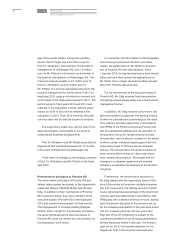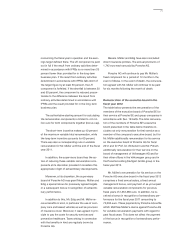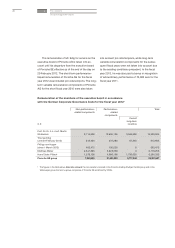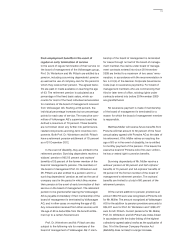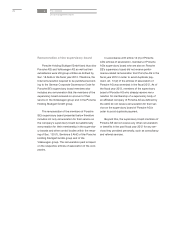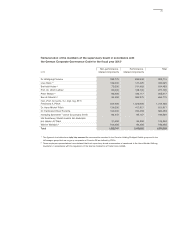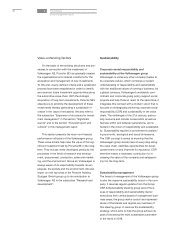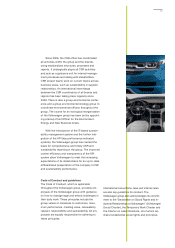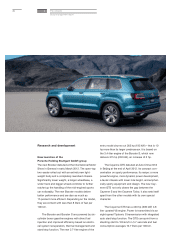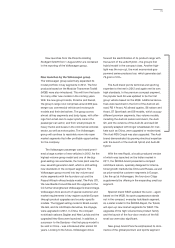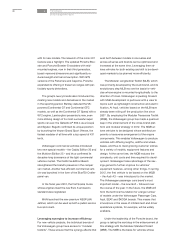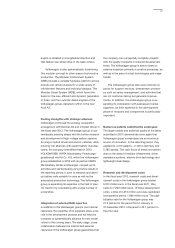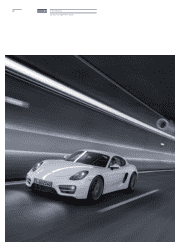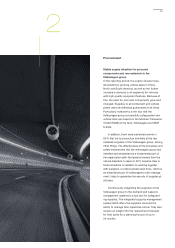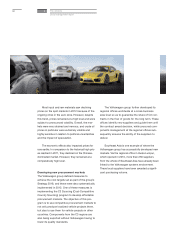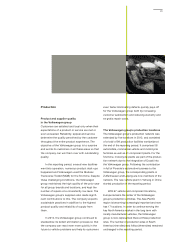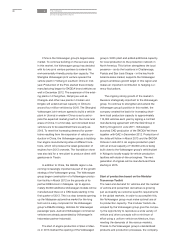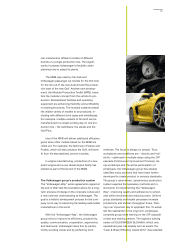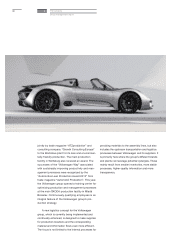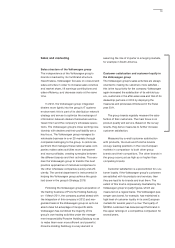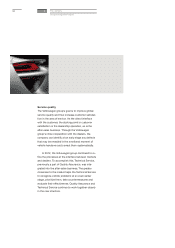Porsche 2012 Annual Report Download - page 84
Download and view the complete annual report
Please find page 84 of the 2012 Porsche annual report below. You can navigate through the pages in the report by either clicking on the pages listed below, or by using the keyword search tool below to find specific information within the annual report.
with its new models. The relaunch of the iconic 911
Carrera was a highlight. The updated Porsche Box-
ster and Porsche Boxster S roadsters with mid-
mounted engines, now in their third generation,
boast improved dimensions and significantly re-
duced weight and fuel consumption. With GTS
versions of the Panamera and Cayenne, Porsche
expanded its offering in these two ranges with par-
ticularly sporty derivatives.
The group’s luxury brands also introduced fas-
cinating new models and derivatives in the market
in the reporting period. Bentley debuted the V8-
powered Continental GT and Continental GTC
models, as well as the Continental GT Speed with a
W12 engine. Lamborghini presented a new, even
more striking design of its most successful super
sports car ever, the Gallardo LP 560-4 as a Coupé
and Spyder. Bugatti confirmed its unique position
by launching the Veyron Grand Sport Vitesse, the
fastest roadster of all time with a top speed of 431
km/h.
Volkswagen commercial vehicles introduced
two new special models – the Caddy Edition 30 and
the Multivan Edition 25 – and thus confirmed its
decades-long dominance of the light commercial
vehicles market. The California Edition Beach
strengthened the brand’s presence in the camper
van market. Another fuel-efficient commercial vehi-
cle was launched in the form of the BlueTDI Crafter
panel van.
In the fiscal year 2012, the first Scania trucks
whose engines meet the new Euro 6 emissions
standard were registered.
MAN launched the new premium NEOPLAN
Jetliner, which can be used as both a public service
bus and coach.
Leveraging synergies to increase efficiency
For new vehicle projects, the individual brands of
the Volkswagen group have access to “modular
toolkits”. These ensure that the synergy effects that
exist both between models in one series and
across all series and brands can be optimized and
increased at the same time. Leveraging them al-
lows vehicles for both existing and still to be devel-
oped markets to be planned more efficiently.
The Modular Longitudinal Toolkit (MLB), which
was primarily developed by the Audi brand, and its
evolutionary step MLB evo are the basis for vehi-
cles whose engine is mounted longitudinally to the
direction of travel. Volkswagen is pushing forward
with MLB development in particular with a view to
topics such as lightweight construction and electri-
fication. At Audi, vehicles based on the MLB have
already been rolling off the production line since
2007. By employing the Modular Transverse Toolkit
(MQB), the Volkswagen group has made a quantum
leap in the enhancement of the cross-brand plat-
form and modular strategy in 2012. The MQB al-
lows vehicles to be designed whose architecture
permits a transverse arrangement of the engine
components. This enables Volkswagen to produce
vehicles with differing lengths, widths and wheel-
bases, and thus to meet growing customer wishes
for a variety of models, equipment features and
design. At the same time, the MQB reduces the
complexity, unit costs and time required for devel-
opment. Volkswagen takes advantage of the sav-
ings gained to further improve its vehicles’
equipment features, among other things. In spring
2012, the first vehicle to be based on the MQB
– the Audi A3 – was introduced to the market.
The Volkswagen passenger cars brand’s most
important model – the new Golf – followed over
the course of the year. In the future, the MQB will
form the technical foundation for a large number
of models under the Volkswagen Passenger Cars,
Audi, SEAT and ŠKODA brands. This means that
innovations in the areas of infotainment and driver
assistance systems, for example, will be widely
available.
Under the leadership of the Porsche brand, the
group is taking the next step in the enhancement of
this strategy with the Modular Standard Toolkit
(MSB). The MSB is the basis for vehicles whose
2The company
Group management report
280


